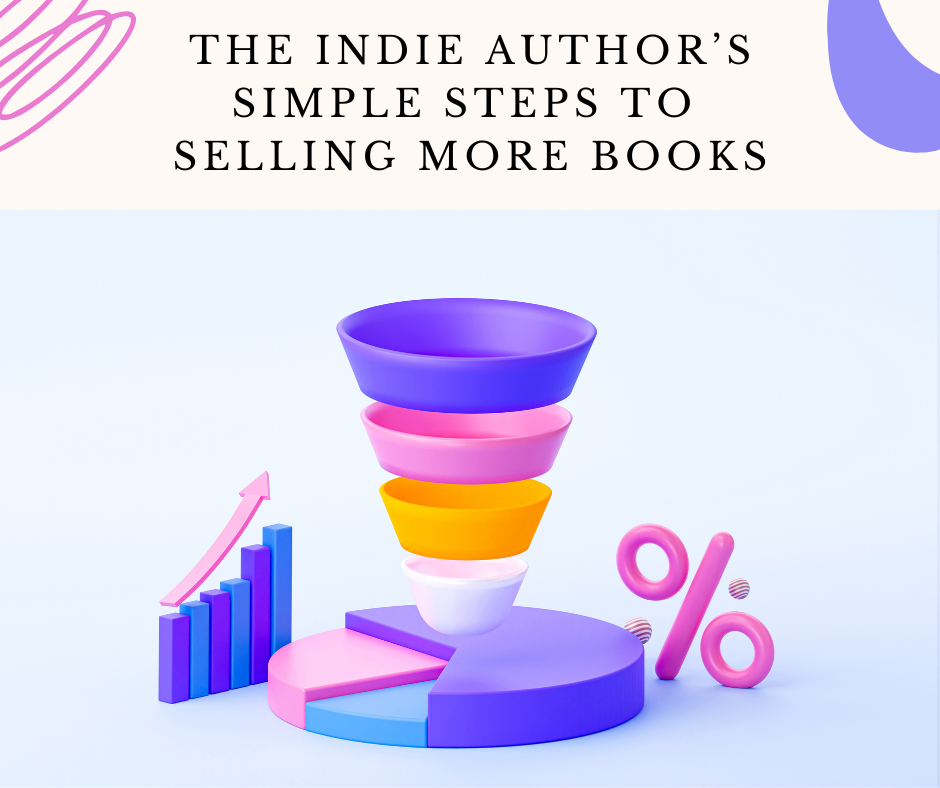Are you feeling the pressure to chase big financial goals—like hitting 6- or 7-figures as an indie fiction author?
I’d like to suggest a different approach: instead of focusing on massive, long-term financial targets, ask yourself this simple question:
What’s the minimum amount you need right now to live comfortably while pursuing your writing dreams?
I’m not talking about making $1M a year from now when you’re only earning $50k at the moment, or aiming for six figures in 6 months with only $2k in current monthly income.
Those goals, while possibly attainable if the stars align, probably feel pretty far away and overwhelming.
So instead, let’s focus on what’s achievable in the next stage of your journey as an indie author.
What’s the smallest income boost you need to feel progress, maintain your lifestyle, and stay motivated to keep writing?
The Indie Author’s Reality Check
As indie authors, it’s easy to start feeling the pressure to grow quickly, especially when we’re bombarded by success stories of bestsellers or authors who seemingly explode in popularity overnight (even if we know there really is no such thing as an overnight success).
The truth is, your journey and your success are unique to you.
Here’s what I do when I need to recalibrate my money goals, and I think it’s relevant for you too:
Step 1: Get Clear on Your Financial Baseline
What’s the bare minimum you need to cover your expenses and live the life you’re content with right now?
What would be enough to enjoy the life you currently lead, without feeling financial pressure?
Take some time to assess your financial needs realistically. You may find that a small increase in income from your book sales, freelance gigs, or side hustles will give you the freedom you desire without the constant chase for “more.”
This might mean having an honest discussion with your family or partner about what’s really necessary for the lifestyle you want.
Perhaps you can streamline your efforts by focusing on what’s working instead of trying to do it all (one of my personal favorite tactics).
It’s about finding balance, not just in your income streams but in how you spend your time, both personally and professionally.
Step 2: Diversify Your Income Streams
Indie authors sometimes pin their hopes on one bestselling novel to make it big. But what happens when that doesn’t sell as well as you hoped? If your only focus is on one particular project, you’re putting yourself at risk of financial instability.
Instead, how about creating multiple avenues for earning money?
This could include offering short stories, multiple books in a series, novellas, or even non-fiction books on the side, running a Patreon, or selling writing-related services like editing or coaching, if you’re qualified.
Spend some time brainstorming how else you could bring in some revenue that would help shore up your financial foundation, but still allow you to focus on your main gig.
Step 3: Build Your Author Life Around Your Writing
We’re not following this indie thing to to work more, but to work in ways that allow us to live creatively and meaningfully, right? So why not prioritize your life, and then fit your writing career around it?
Start by scheduling your personal time first—your family, vacations, hobbies, and the things that bring you joy outside of writing. Then, build your writing and marketing activities around that. This approach prevents burnout and ensures that your business supports the lifestyle you want, not the other way around.
This approach is what I’ve done for over two decades, and it’s enable me to never miss a moment while still contributing financially to my family.
For example, if your goal is to write one book a year, set a realistic word count target that allows you to maintain your quality of life. If you want to release two books a year, adjust your lifestyle and workload accordingly, but keep your happiness at the forefront.
Also, consider hiring help—whether it’s a virtual assistant to handle marketing tasks or a designer to create your book covers—so you can focus more on the writing itself.
Focus on the Next Step, Not the Final Destination
The key takeaway?
Don’t obsess over the big, far-off financial goals. Instead, focus on the next step that will get you closer to where you want to be.
That might be publishing your next book, growing your email list, or simply finding time to write consistently each week.
When you put your life and your well-being first, everything else—including more income—will follow.
Indie publishing is a marathon, not a sprint. By focusing on sustainable, manageable growth, you can avoid the burnout and stress that often accompany the race to higher earnings. And with each small step, you’ll find yourself not only achieving more but enjoying the journey along the way.
This method will help you maintain your passion for writing, give you the freedom to live your life, and still allow you to reach that next level of success.
By shifting your mindset from chasing large, distant financial goals to achieving the small wins, you’ll not only find peace but also create the steady growth that will sustain your writing career for years to come.
~*~*~*~*~*~*~*~*~*~*~*~*~*~*~
When you’re ready, here’s how else I can help:
1. Join the Indie Fiction Authors Circle for just $25/year for ongoing support here
2. Take the Online Marketing Map for Indie Fiction Authors course here
3. Book at 1:1 session with me here




